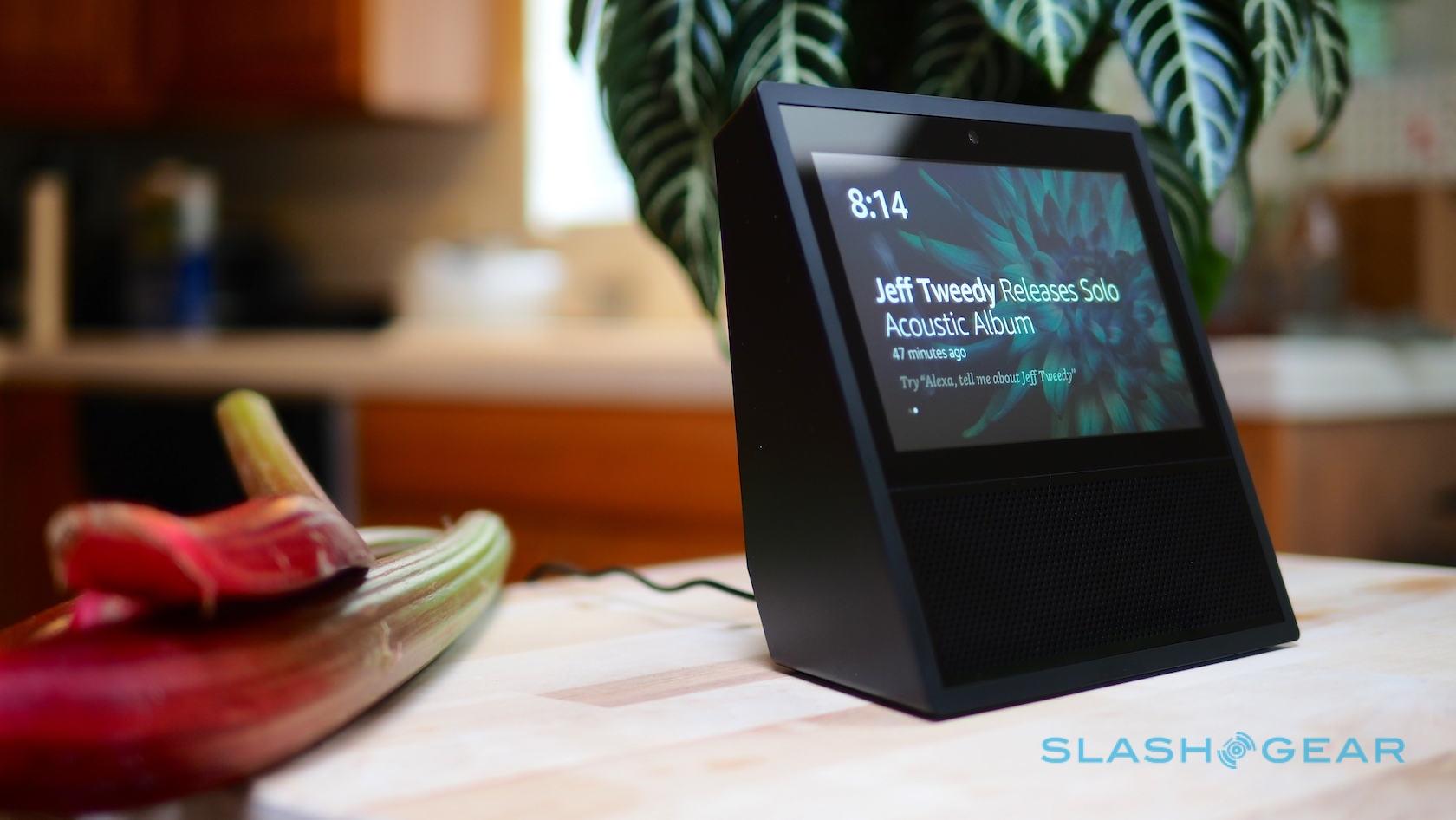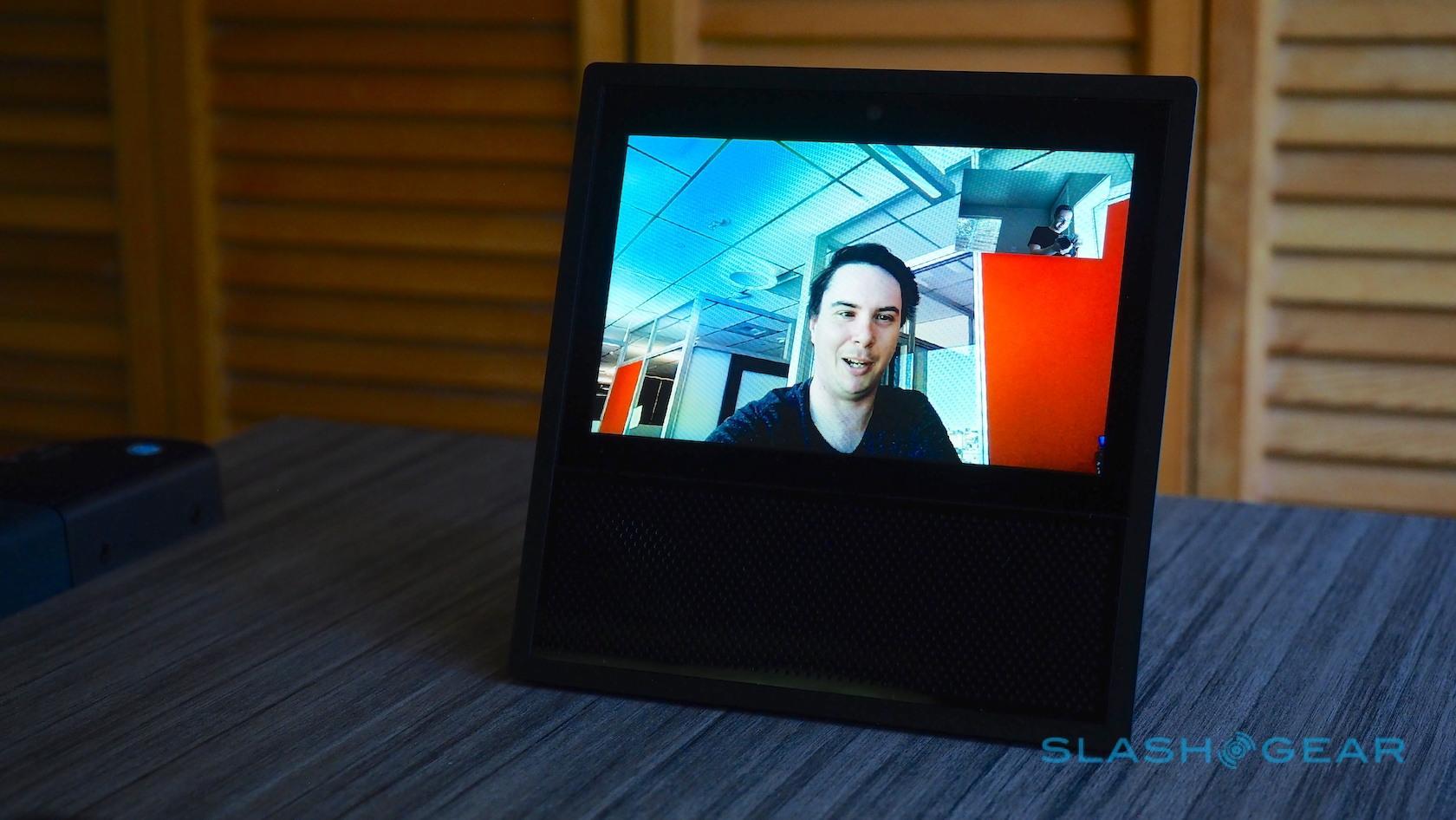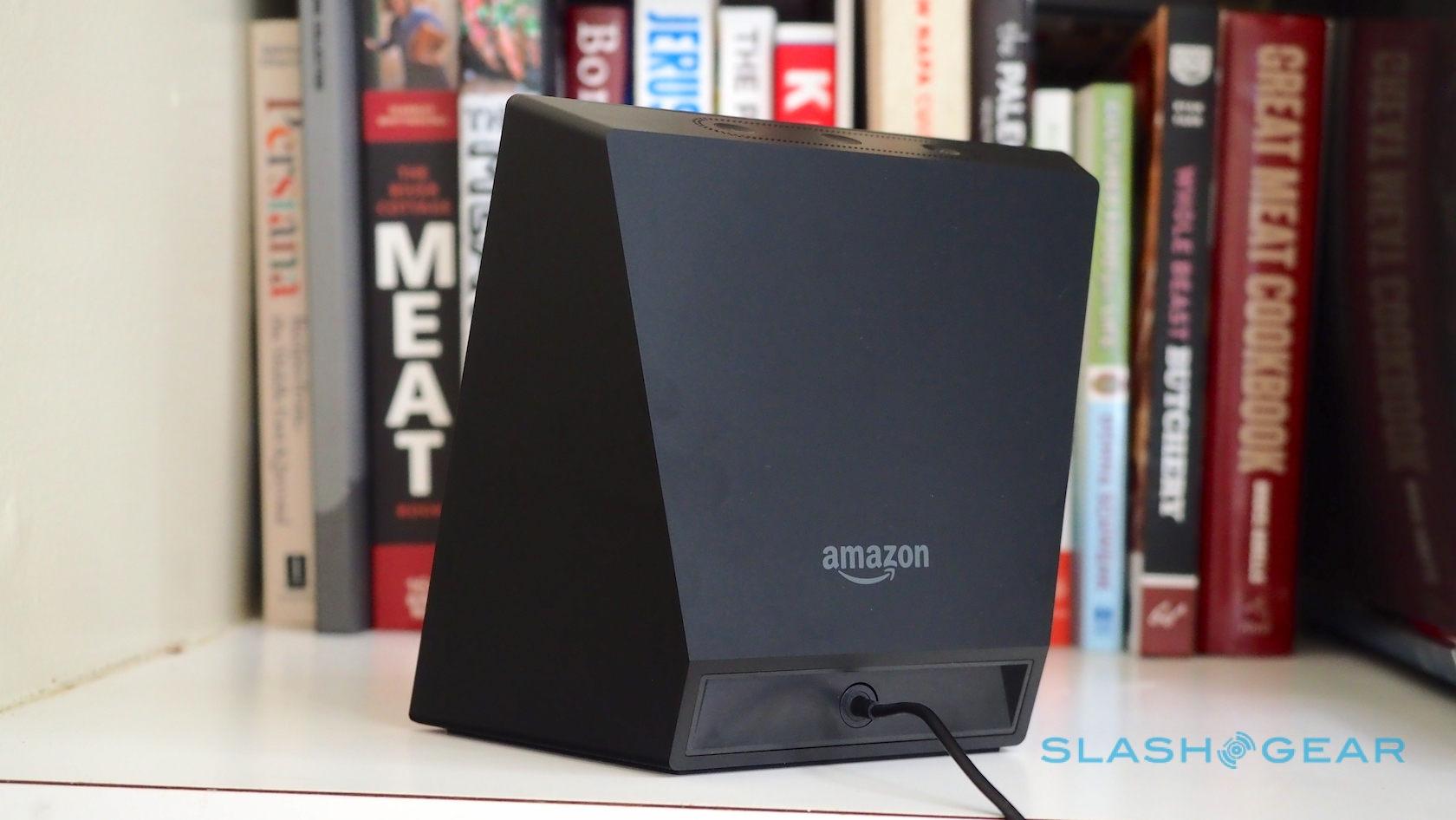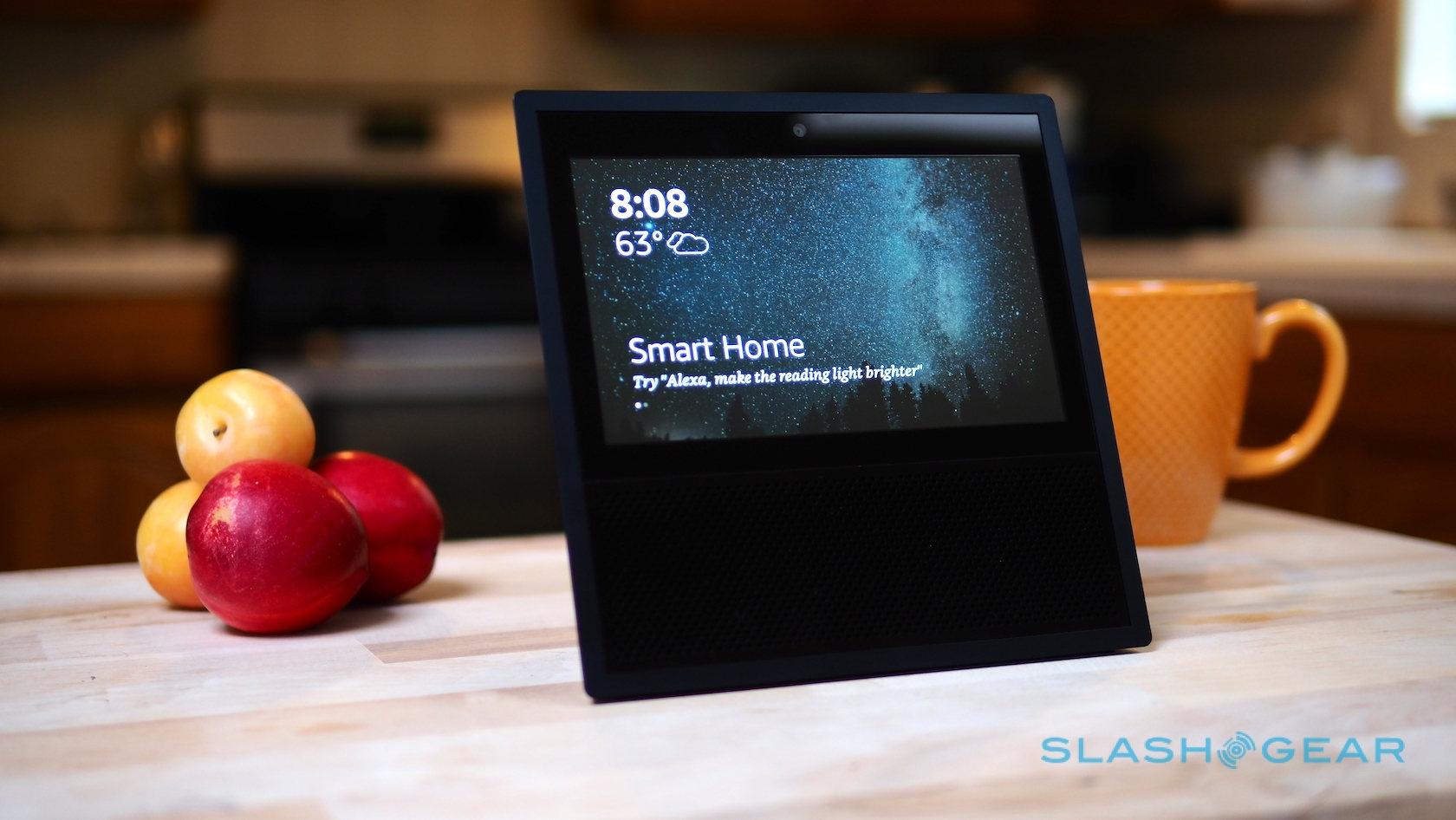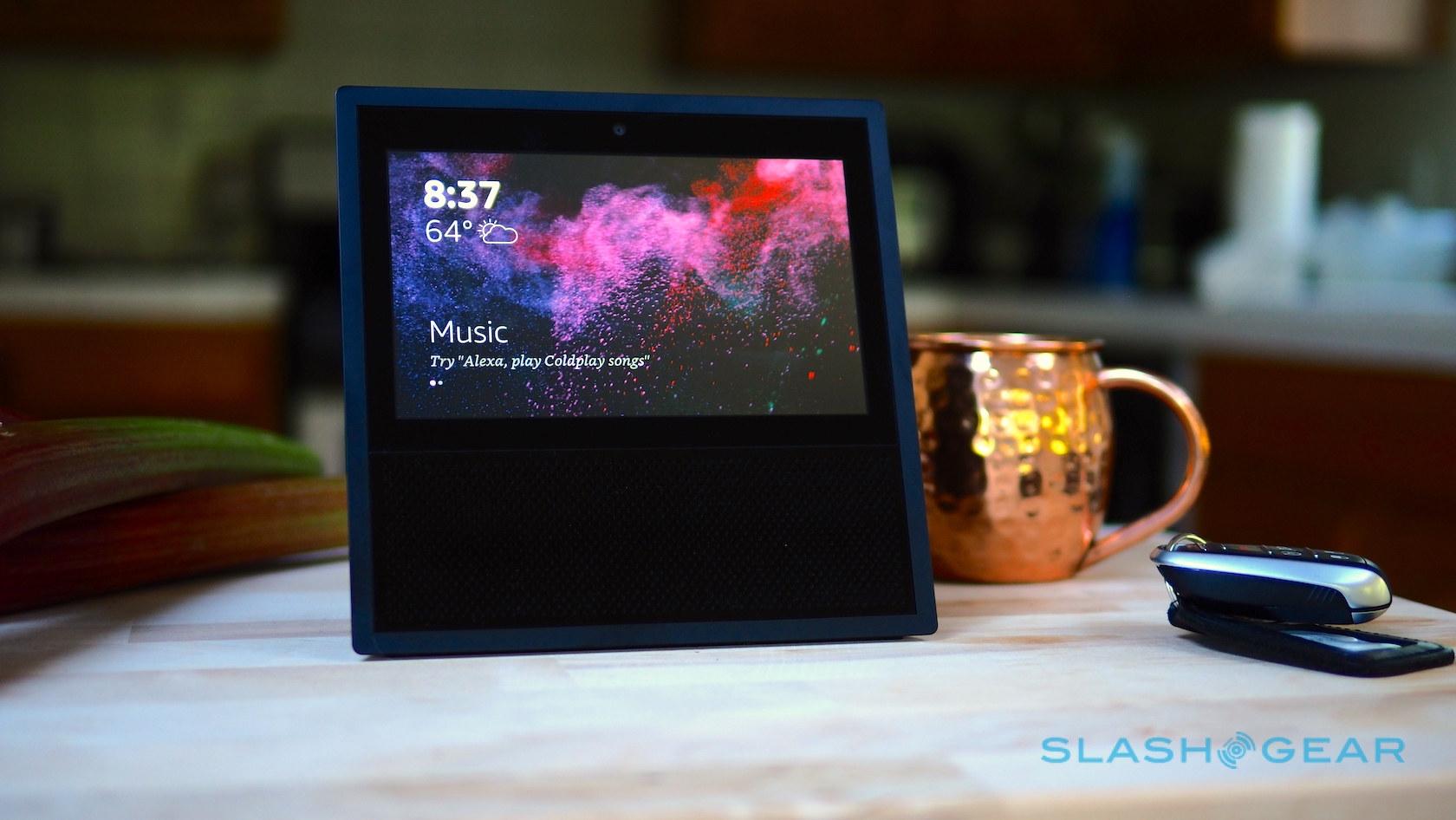Amazon Echo Show Review: Alexa's Screen Shows Promise
- Alexa is as useful as ever
- Hardware is solid and soberly handsome
- Touchscreen-enabled apps show some promise
- Short list of touchscreen-enabled 3rd-party Skills
- Teething pains for some Skills on how display is used
- Most expensive Echo version yet
- Alexa still lacks multi-user support
Amazon's Echo has grown from a voice-controlled curiosity to being a legitimate home assistant, and now, with Echo Show, it's gaining a display. The latest iteration in the smart speaker series bucks the trend of spoken interactions only, adding a touchscreen so that Alexa can show & tell. At $229.99, however, it's the most expensive version so far, and at this early stage not everything has quite got to grips with the new abilities.
Echo Show hardware
Amazon's hardware continues to err on the utilitarian side. Unlike the cylindrical Echo and Echo Dot, the Echo Show opts for a trapezoidal design, measuring in at 7.4 x 7.4 x 3.5 inches. The front is dominated by a 7-inch touchscreen, with dual 2-inch stereo speakers underneath behind a mesh grille. You can pair up a Bluetooth speaker for louder audio, though the Echo Show's own speakers are reasonable, or connect a Bluetooth source and play it through Amazon's device.
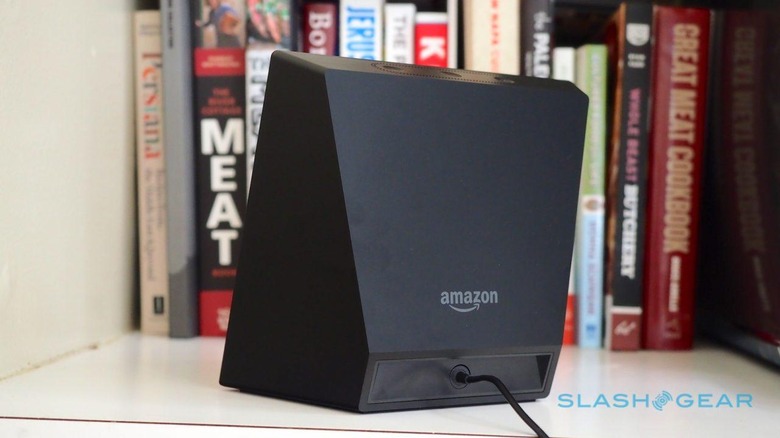
Physical controls are limited to volume up/down and a microphone mute button that doubles as a camera toggle, all running along the top edge. Unlike the Echo and Echo Dot, you don't get a ring of LED lights to flash blue when Alexa is listening or red when the microphone and camera is deactivated. Instead, there's a colored line running along the bottom of the display to indicate that.
Show me the Skills
Despite the touchscreen, Alexa is still primarily a voice-controlled assistant. As before, you can trigger her by calling out her name – or, if you change it in the companion smartphone app, saying "Amazon" instead – before making your request. If you've used an Echo already the core functionality won't come as a surprise, either, though the display does enhance things some.
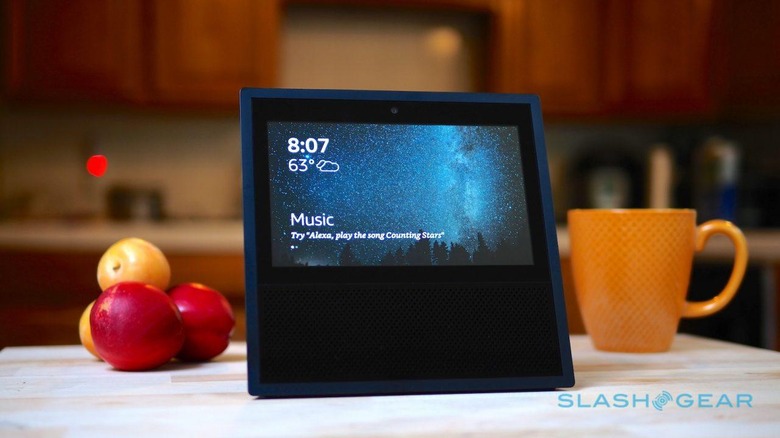
The home screen, which you can return to at any time by saying "Alexa, go home", cycles between recent news headlines and suggestions of what you can do with the Echo Show, like play music or answer questions. The wallpaper periodically changes, cycling through various unobtrusive pictures. Alternatively, you can choose your own photo, though you can't set Echo Show to pick from a shared folder, even if you're using Amazon Prime Photos to back them up.
Ask for the weather, and you get not only a spoken summary but an upcoming forecast on-screen. Reminders and lists are similarly read out, but also get on-screen counterparts. If you're listening to Amazon Music – as opposed to Spotify, Pandora, iHeartRadio, and TuneIn, which are also supported – you'll get lyrics on-screen.
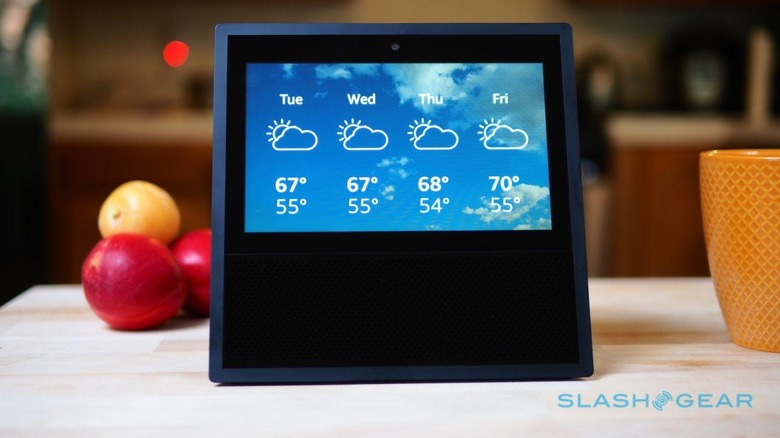
Some of Alexa's features only really start to make practical sense when they have a display to play with. Amazon Video is the obvious example, and indeed you can ask for TV shows and movies to be played, but the calendar integration with Google, Apple, Outlook, and Office 365 is another. As a more visual person I always struggled to conceptualize Alexa reading out my schedule to me; being able to see it in day or week mode on-screen makes a huge difference.
I can't help but feel like the implementation of Echo Show's display is still somewhat half-baked right now, though. By adding a screen, Amazon has highlighted just how useful it can be to see content as well as hear it, but there are some frustrating limitations around how you can interact with that content at times.
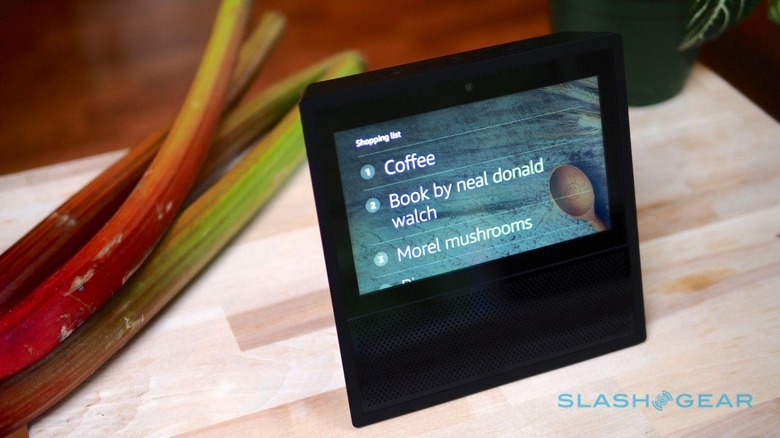
When viewing a shopping list, for instance, you can ask Alexa to remove items by their number, but you can't ask her to repeat an item by number. Indeed, there's no obvious way to recap what was further back up the list, beyond going back to the complete beginning.
In news stories, meanwhile, while you get a text version of the article that moves in time with Alexa reading it out, there's actually no more information included than on, say, the original voice-only Echo. You can send a link to the article to your smartphone, whereupon it'll show up in the Alexa app, but you can't open more of the story on the Echo Show's display. There's no way to manually refresh what headlines cycle through on the home screen, either; some stuck around for days before they were replaced.
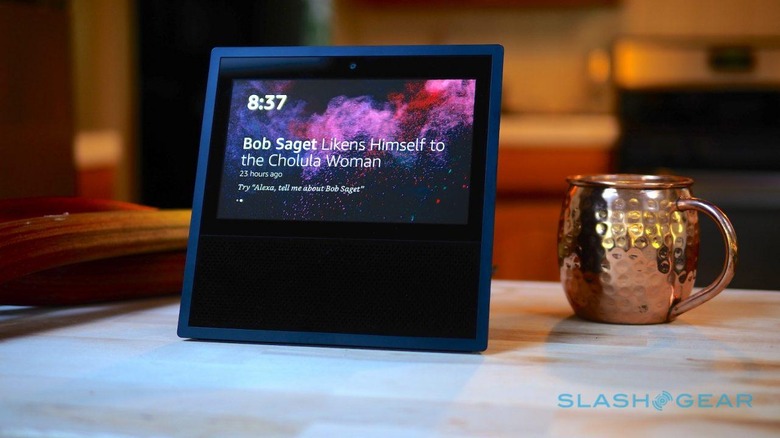
To be fair, it's not only Amazon that is having trouble. There's a handful of third-party Skills that have been updated to support the Echo Show, though they're an extreme minority in comparison to the 13k+ Skills out there today. All of those Skills will indeed work on Echo Show, but it's up to developers to embrace the touchscreen now that Amazon has released an update to its SDK enabling that.
Until that happens, I had a short list of options to play with. That included Fandango and OpenTable, CNN and Bloomberg, AllRecipes and Starbucks, CNBC and CapOne, and Uber. All deliver the same functionality as the voice-only Skills, but with added information on-screen.
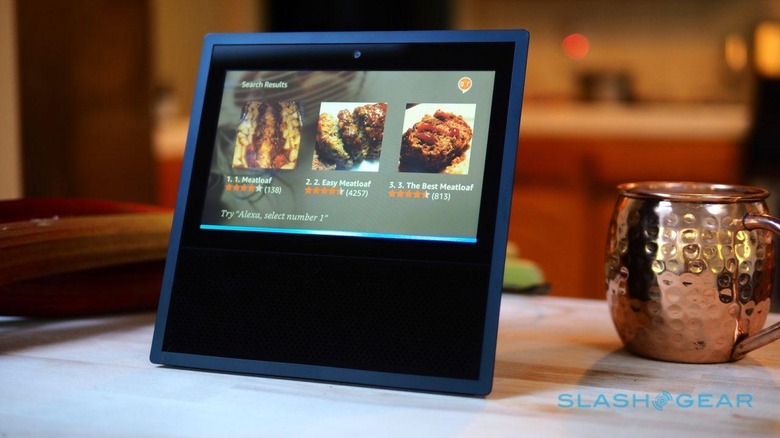
In the AllRecipes app, for instance, after I asked for a meatloaf recipe I was offered a selection complete with thumbnails, titles, and star ratings. I could choose one by number, and then get a list of ingredients and the instructions. There was also the option to send the recipe to my phone.
So far so good, but actually navigating proved to be a chore. Both the ingredients list and the step-by-step instructions spilled off the page, with no apparent way to scroll down further. As with the news headlines, there's no easy way to call up the rest of the content on the Echo Show's display.
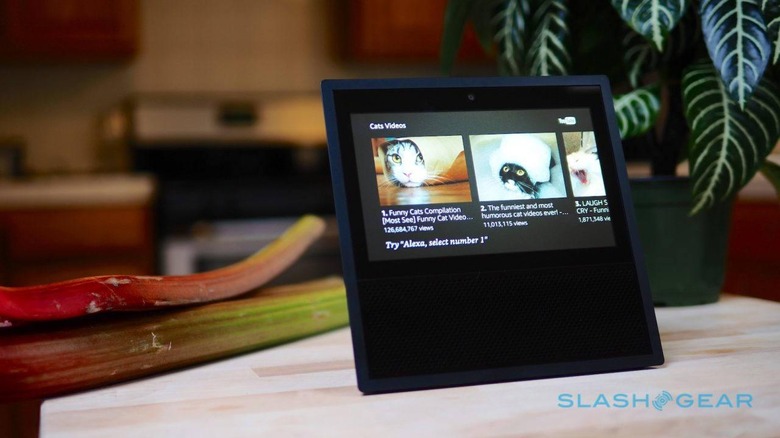
OpenTable, meanwhile, may have been updated to work with Echo Show, but it hardly makes comprehensive use of it. Instead it effectively shows an on-screen counterpart to the existing voice prompts, as you choose a restaurant, date, time, and number of guests, then a summary at the end.
I have lingering questions about just how suited Echo Show is to services like these in general. To pick on AllRecipes as an example, that focus on getting an answer quickly seems at odds with how I – and, I suspect, others – actually go about deciding what to cook. That doesn't mean making the first recipe that comes up in the top three, but reading multiple links and then going from there.
In OpenTable, there's no way to see reviews of the restaurants Alexa finds, or indeed find out any more about them than their names and addresses in a list. You're not getting any more information than from the voice-only Skill. In the same theme, if I'm happy getting up-close with the Echo Show's display to read news articles, then I'm probably better off using my phone instead. That, after all, allows me to read the whole thing in one fell swoop.
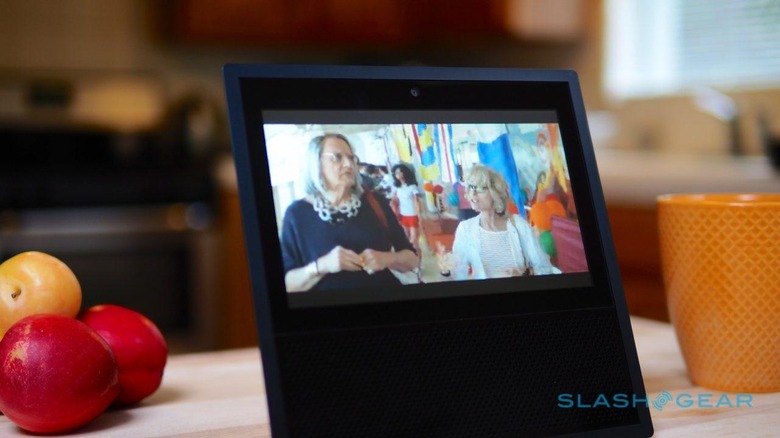
The benefit, of course, is when your hands are occupied. I've found I use Alexa most when I'm in the kitchen, either juggling pans – not, typically, literally – or when my hands are wet or covered in food. It's great being able to ask for weight conversions or set timers, and now you can watch Amazon Prime Video shows while you make dinner. If you interrupt playback to ask a question, it'll automatically resume after a minute or so of giving you the answer; you can pause, skip, and adjust volume by voice, too. You can go hunting YouTube for funny cat videos as well, though other streaming services such as Netflix and Hulu aren't currently represented.
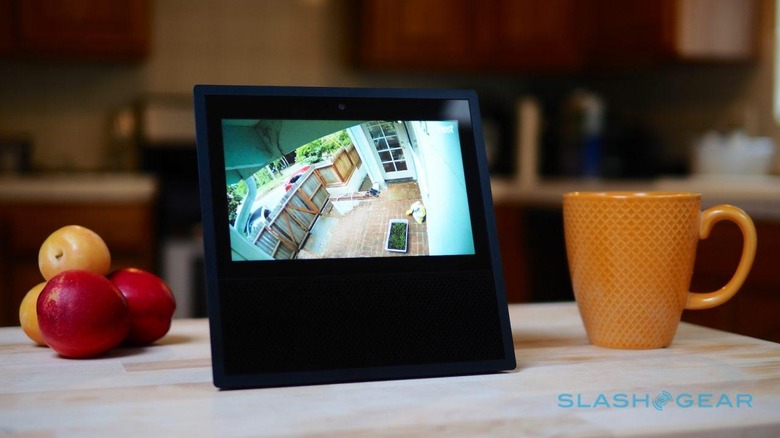
Meanwhile the recent launch of the Smart Home Skill API means you could watch what's going on through your own cameras instead. I installed the Nest Camera Skill and, by asking "Alexa, show me Outside" – because my Nest Cam Outdoor is called "Outside" – was able to see a stream from it on the Echo Show's display. That was quicker than pulling out my phone, opening the Nest app, and tapping the camera I wanted, though I couldn't skip back through its recordings on the Echo Show.
Video Calling
One thing Echo and Echo Dot could never do, of course, is two-way video calling. That takes advantage of the Echo Show's 5-megapixel front-facing camera, and builds on the Echo to Echo voice calling Amazon enabled several months ago. It's actually one of the easiest video calling systems I've used.
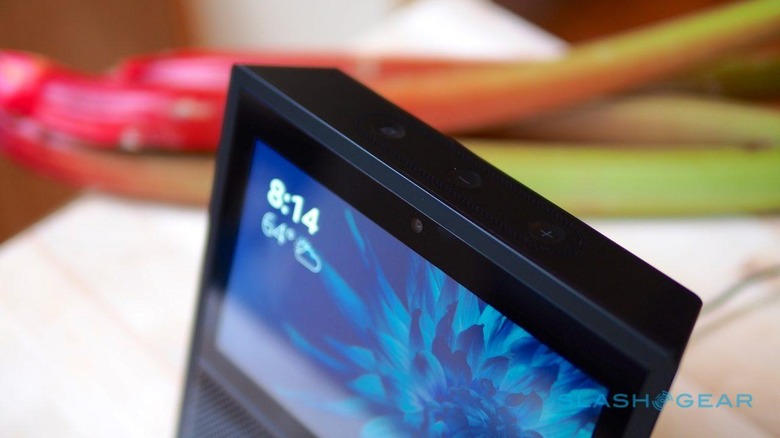
It relies on gaining access to your contacts via the Alexa app on your phone. Once that's been granted, you can ask "Alexa, call Mom" and, as long as there's a contact with that name, and they have an Echo device registered to their account too, you can call them. Echo Show defaults to a video call, but you can tap the screen during a call to switch it to voice-only, and vice-versa.
Video calling isn't new, but allowing people to jump straight into a chat is. Amazon calls it "Drop In" and it bypasses waiting for you to accept an incoming call and simply turns on the cameras.
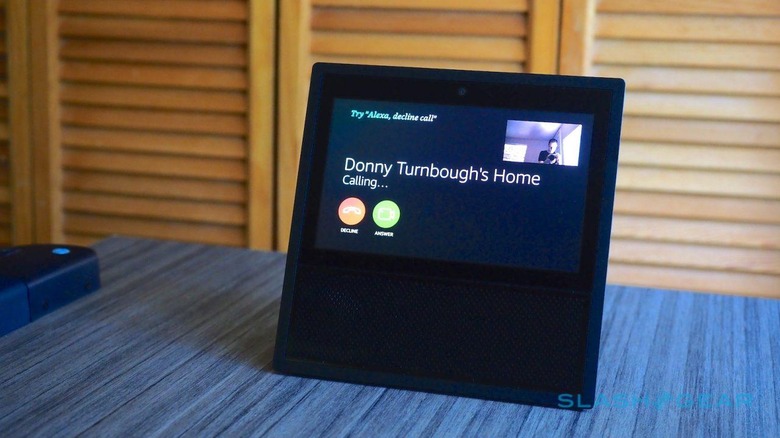
Of course, that's not something you'll necessarily want everybody to be able to do. You can turn Drop In off entirely from the Alexa app, set it to only work for people in your household – you can hold video and voice calls through the Alexa app, too, and send and receive voice calls and messages through audio-only Echo devices – or whitelist specific contacts.
Since you might not always be nearby the Echo Show, Amazon uses a combination of sensors and recent interactions with Alexa to figure out whether to use Drop In. Honestly, the thought of not being able to screen calls first is a turn-off to me, but Amazon argues that it could be a useful way to check in on an elderly relative or child who might not know to answer a ringing Echo Show. Were I to get over my discomfort, I'd like to see a do-not-disturb option that would only enable Drop In within specific hours.
Alexa, let's go shopping
Perhaps ironically, Echo Show's most polished interactions happen when you're shopping. There's support for both reordering products you've purchased before, as well as searching for new items. Either way, the fact that you can now see product details on-screen will, I suspect, make the experience a lot more comfortable for some.
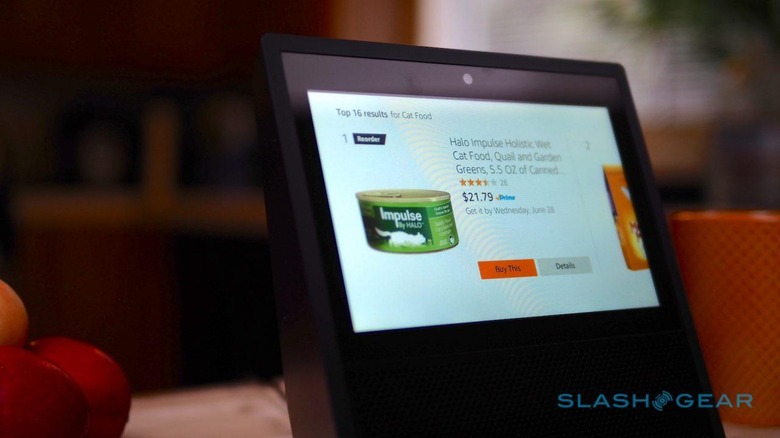
Reorder items are given priority in the list, a side-scrolling carousel of 10-20 options Alexa has discovered. You can tap through into the product details – including selecting any specific options, like color or size, that are available – though there's no way to see the reviews, only the overall rating. From the product page, you can either buy the item straight away or add it to your cart.
Again, though, we're not quite at the stage of Alexa being the perfect personal shopper. Part of the problem is how she handles follow-on questions. You can go shopping for socks, for example, and get a list of the most popular items, but you can't then ask to have that list filtered by color. Instead, you have to do a new search. After a point, it becomes easier to reach for your phone and use the regular Amazon app.
Wrap-Up
The more I interacted with Alexa via Echo Show, the more the subtle differences versus it and the Echo or Echo Dot became clear. When I use one of the latter, Alexa is decentralized: a disembodied voice, much like a Star Trek ship's computer. In contrast, Echo Show embodies Alexa much more corporally. Even if there's no real reason to look at its display during your answer, I found I invariably did anyway.
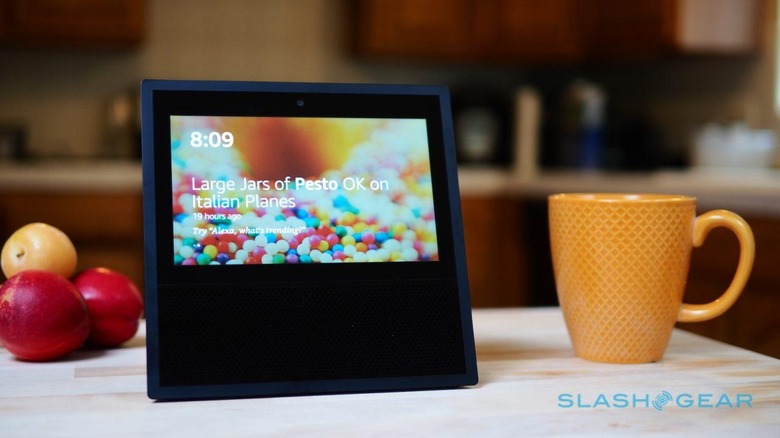
In turn, Alexa goes from being the clever sprite that pervades your space to a fixture in a certain place. One side-effect of that was that I'd sometimes opt not to ask Alexa for help when I was too far away from the Echo Show to see the screen.
Then there's the price. One of the things I like most about the Echo Dot is that, at under $50, experimenting with voice control can be a fairly impulse purchase. Echo Show, at $229.99, certainly isn't that. Suddenly the absence of things like individual recognition of different users and multi-room synchronized audio become more inexcusable. Why should only my calendar show up on what's plainly positioned as a "family device", and similarly why should everyone who has physical access be able to view it, add to it, or delete things from it?
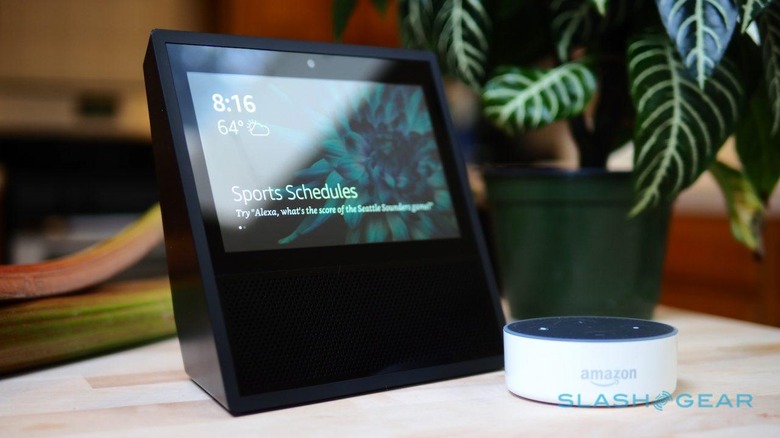
If Amazon has demonstrated anything over the past couple of years, it's that it has every intention to keep Alexa – and the Echo ecosystem – updated. The pace of new features, and new third-party Skills, being added has been impressive: if you bought an original Echo on day one, and compared it to what the smart speaker can do today, the changes have been huge. I don't doubt Amazon has similar ambitions for Echo Show.
Nonetheless, given the price and the teething pains of adding a display to what was a voice-only interaction model, holding off until that touchscreen really comes into its own seems reasonable. There's certainly plenty that Echo Show could eventually do, whether that be offer simple color control over your connected bulbs, a shortcut panel for all your smart home devices, and more, but we'll have to wait to see how developers take advantage for that. Early-adopters may want to be on the train from the start, but unless you really must have video calling I suspect the wait might be worth it.

